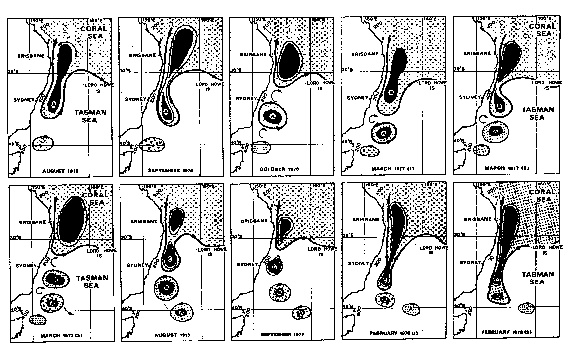
Figure 1. NOAA satellite image of new eddy forming from 'retroflection-pinch'.

Figure 2. Summary of observations displaying the evolution of eddies
from 'retroflection-pinch', (Cresswell, G.R., and R. Legeckis,
1986).
OC4331-Mesoscale
Oceanography
Final Project Summary
Topic Area
Project Team Member(s)
LT Tim Smith USN
LT Hank Howell RN
Major Findings
First observed by Capt James Cook RN (1770), the East Australian Current (EAC) is the major oceanographic feature of Coral & Tasman Seas, and forms the western leg of south Pacific sub-topical gyre. It originates from the south equatorial current, which splits at 18ºS into the Hiri, which flows northwest, and the EAC, which turns south down Australia's East Coast. Up to 150 km wide and about 500m deep, the EAC transports high T (20-26°C) low S (~35.5) from low latitudes to the colder (~15 °C) saltier (>35.7) Tasman Sea at rates of 5 to10 million litres per second. Flow is strongest in summer (peaks in February) and weakest in winter (as much as half the flow) with velocities between 0.5 and1.0 m/s along coast and ~2.0m/s in main east branch.
Frequent intrusions onto shelf and close to shore cause meanders and instabilities to develop. This often forms small clockwise eddies (~30-40km in width) that can produce a northerly current flow on the shelf. Where the EAC intrusion departs the shelf, upwelling often develops cooling the coastal waters by as much as 5°C.
At its southern extreme, as far south as 42ºS, the EAC flows around a U-shaped meander, known in other regions as a 'retroflection'. Flowing southward near the coast then northward offshore, some flow then recirculates back to the northwest while the bulk of the EAC turns southeast towards New Zealand forming the Tasman Front.
Eddies are essentially similar to those of the Gulfstream and Kuroshio, but are formed by a ëretroflection-pinchí process similar to that of Agulhas or Brazil currents. They are dominant features in Tasman Sea south of 32°S, typically 150-250km wide and extend to about 500m depth, although can affect temperature structure up to 1500m. Rotating at up to 2m/s (4kts) at their edge with temperatures at their core of 25-31°C, they maintain their water mass ID for months to years. The eddies usually propagate SSW in complex paths and have various destinies eventually leading to their demise which may include:
- Natural decay through cooling and mixing over a period of 2-3 years.
- Reconnection with EAC, when back in close proximity, such that the EAC encircles the eddy, which often results in full coalescence of the eddy.
- Reabsorption into Tasman circulation after the eddy has propagated further east.
- Collision with the shelf causing distortion of the eddy into an elliptical shape, which may process.
- Pairing-up with another, when in close proximity, and interaction with each other, (displaying the behaviour of modons studied in class). They may coalesce either partly or completely.
Behaviour of EAC and Eddies is significant for ASW and Fisheries, but this region is understudied compared to other WBC systems which produce eddies. As ever, more research is recommended.

Figure 1. NOAA satellite image of new eddy forming from 'retroflection-pinch'.

Figure 2. Summary of observations displaying the evolution of eddies
from 'retroflection-pinch', (Cresswell, G.R., and R. Legeckis,
1986).
References
Nilsson, C.S., and G.R. Cresswell, 1981: The formation and
evolution of East Australia Current warm-core eddies. Prog.
Oceanog., 9, 133-183.
Cresswell, G.R., and R. Legeckis, 1986: Eddies off southeastern
Australia. Deep-Sea Res., 33,
1527-1562.